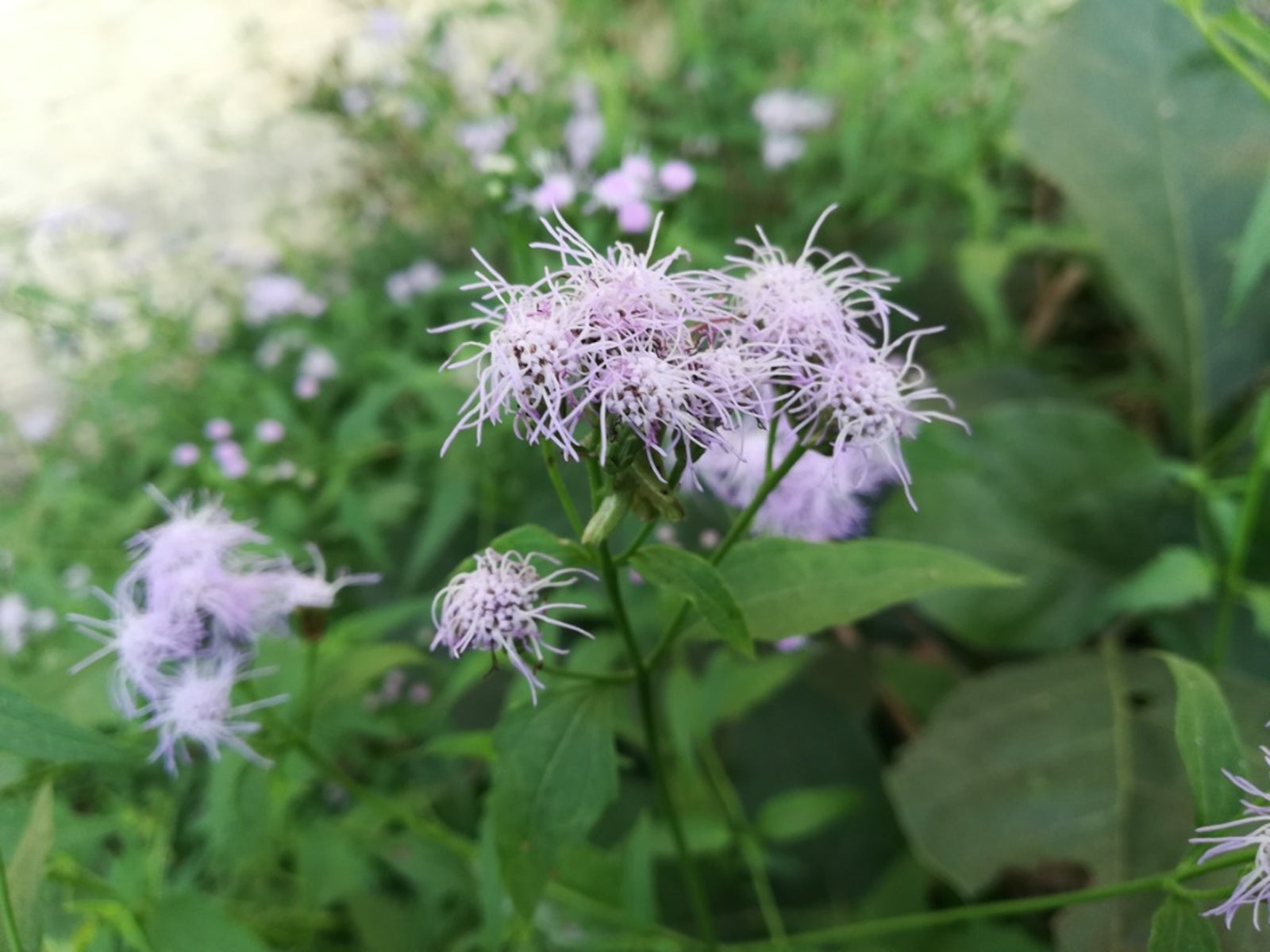Blue Mistflowers - How To Grow A Mistflower Plant


Blue mistflowers are a colorful addition to the natural area or sunny edges of a wooded garden. Grow them alone or combined with daisies and other colorful perennials. Mistflower care is minimal. Learning how to grow a mistflower plant is simple; the flat, fuzzy flowers add a delicate air to the area where they're planted.
Mistflower Info
Commonly called hardy or wild ageratum or mistflower, mistflowers are botanically named Conoclinium coelestinum and classified as a wildflower. The plant closely resembles the garden variety of ageratum, only larger. Wild ageratum grows on stems reaching 2 to 3 feet (61-91 cm.) tall. Composed of florets, flowers of some cultivars may have a purple or pinkish tint and can be as big as 4 inches (10 cm.) across. Blue mistflowers remain intact longest and retain their color without looking dried up. Blue wild ageratum comes in shades of powder blue, clear blue, and lavender.
How to Grow a Mistflower Plant
Mistflower info instructs planting seeds in full sun to light shade in a soil that remains moist. For best performance, mistflower care requires regular watering when soils dry out, although they are somewhat drought tolerant. When happy in their location, blue mistflowers may spread into areas where they are not wanted. Keep them in their place by digging the underground rhizomes up and planting them into another area that will benefit from the fluffy flowers of wild ageratum. Deadhead spent flowers of blue mistflowers before they can drop seed. Wild ageratum is an important source of food for butterflies, and you will likely find them visiting often when growing this plant. Unfortunately, deer like them too, so try to include some deer resistant plants, such as marigolds nearby when planting blue mistflowers. Use other forms of repellents if browsing deer are a problem. Use this mistflower info to get started growing wild ageratum mistflowers in an area of your landscape.
Gardening tips, videos, info and more delivered right to your inbox!
Sign up for the Gardening Know How newsletter today and receive a free copy of our e-book "How to Grow Delicious Tomatoes".

Becca Badgett was a regular contributor to Gardening Know How for ten years. Co-author of the book How to Grow an EMERGENCY Garden, Becca specializes in succulent and cactus gardening.
-
 Grow ‘Karl Rosenfield’ Peony Plants For The Ultimate Frilly Border Beauties And Cut Flowers
Grow ‘Karl Rosenfield’ Peony Plants For The Ultimate Frilly Border Beauties And Cut FlowersFor frilly double magenta peony petals infused with a heady fragrance, grow ‘Karl Rosenfield’ peony plants. Here’s how to cultivate the ultimate plushy blooms
By Tonya Barnett
-
 10 Common Composting Problems That Can Spoil Your Garden Gold – Plus Easy Fixes
10 Common Composting Problems That Can Spoil Your Garden Gold – Plus Easy FixesLearn how to troubleshoot common composting issues before they ruin your stash – from bad smells and bugs to materials not breaking down as they should.
By Susan Albert